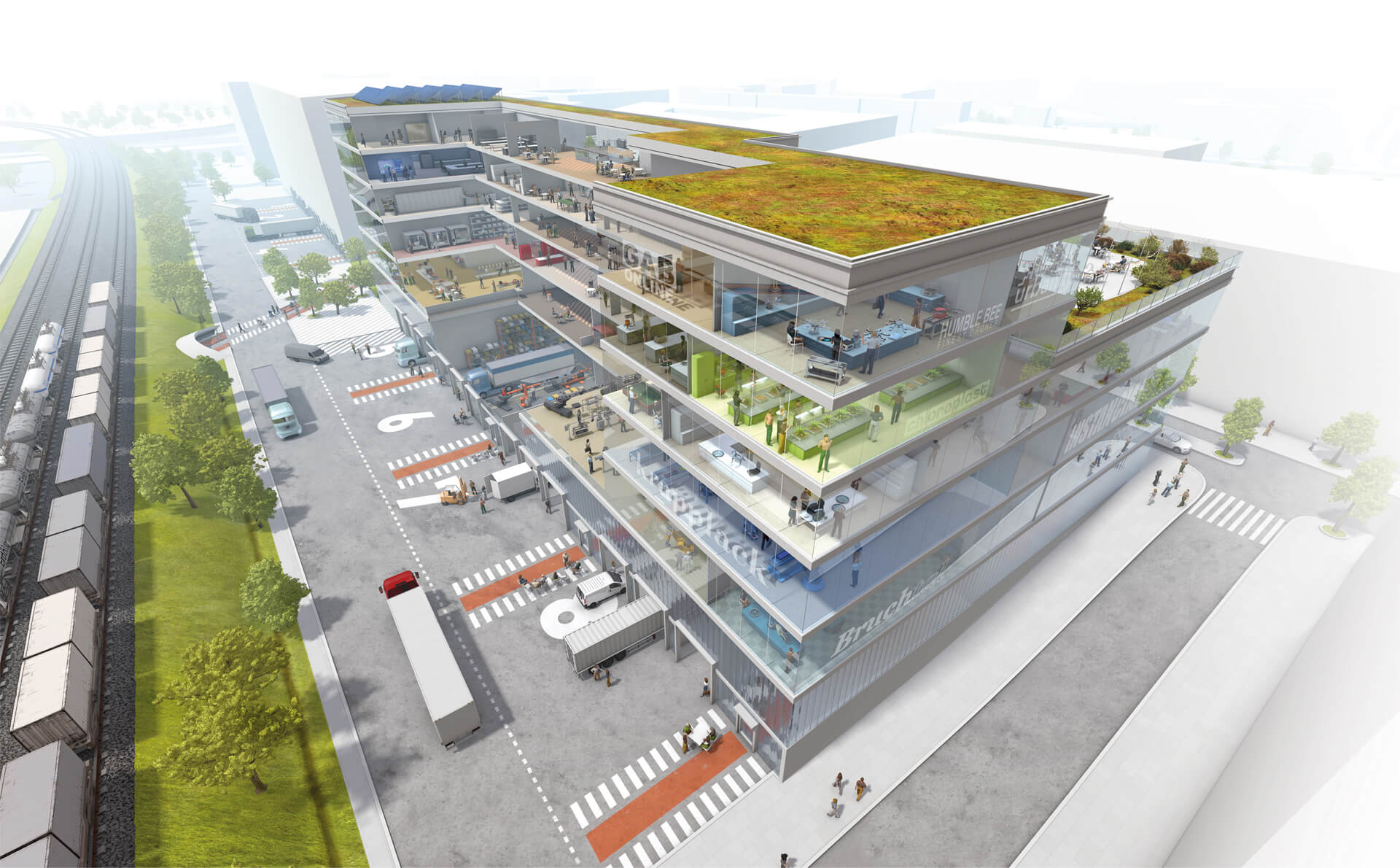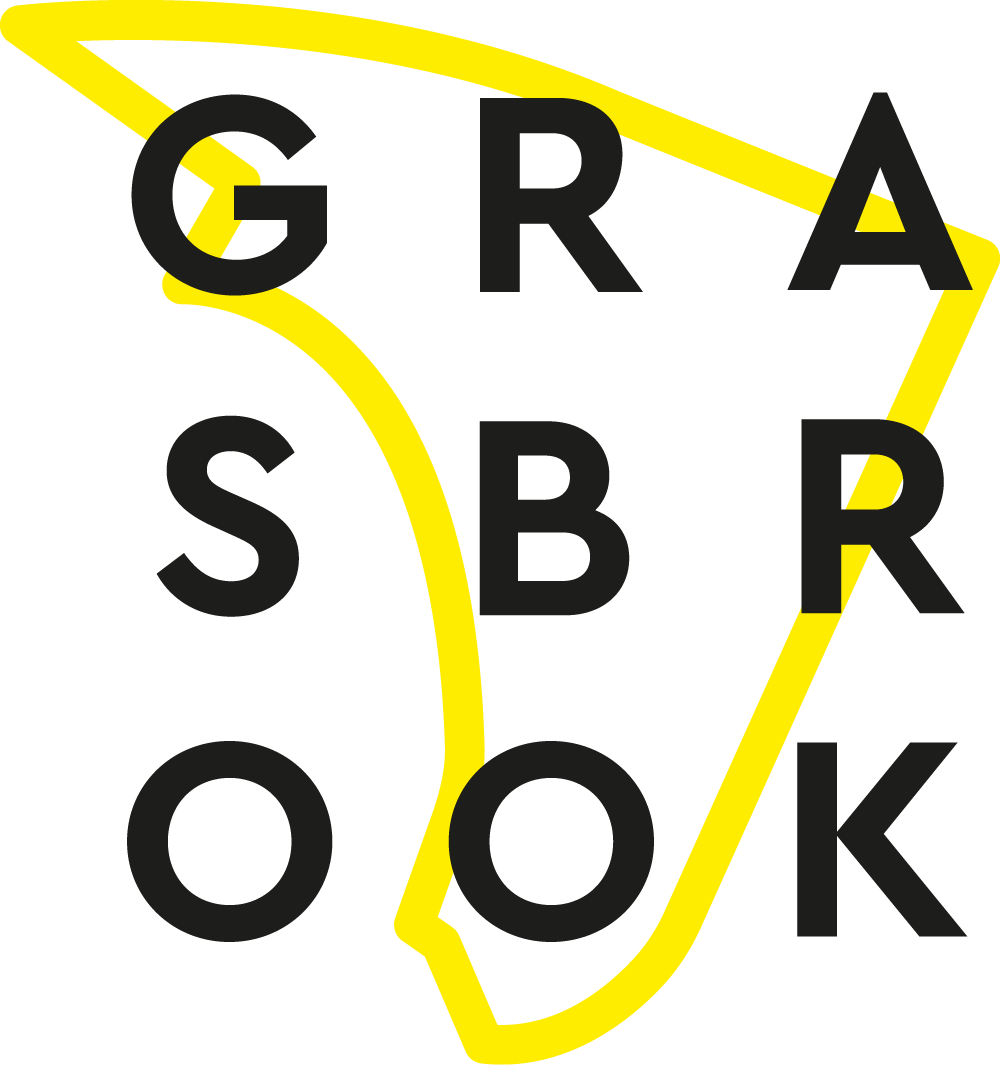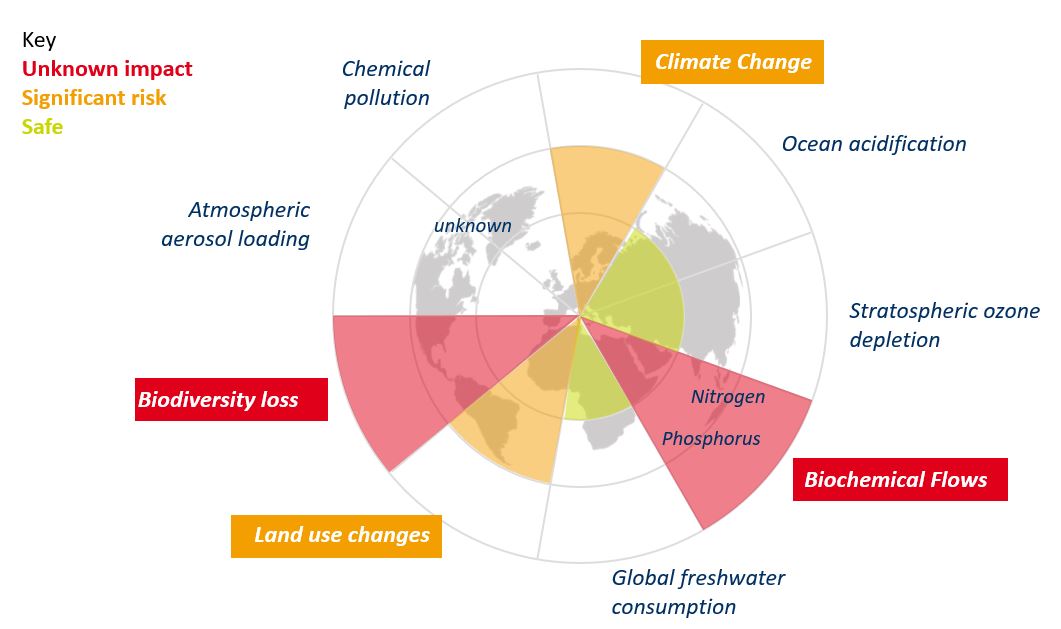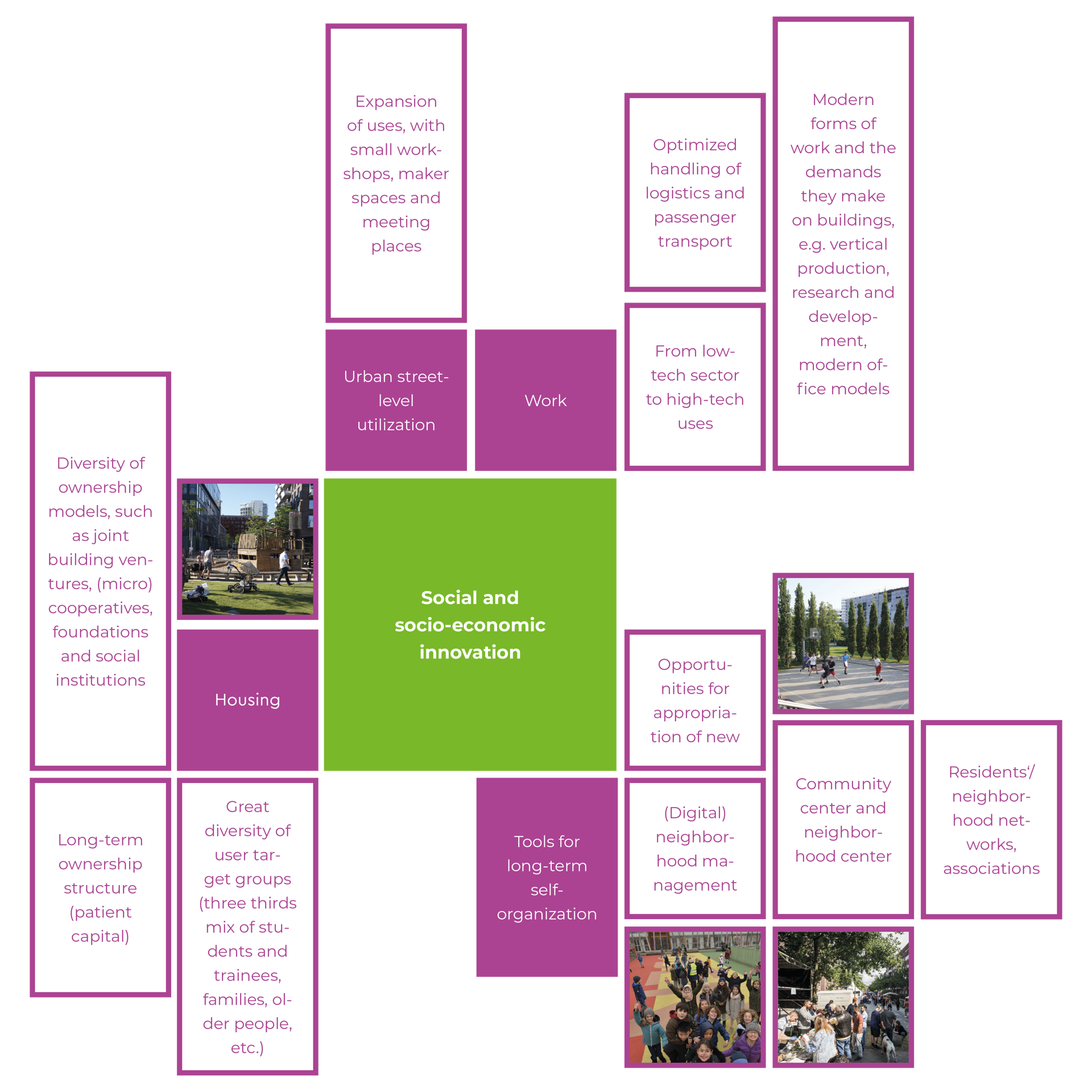Grasbrook: the innovation neighborhood
The concept of planetary boundaries sees cities as triggers for ecological and social challenges, but they are also centers of technical and social innovation. Developing a new neighborhood like Grasbrook thus also presents a major opportunity to find viable solutions for innovative urban development and to make intelligent use of the opportunities offered by digitalization. Against this backdrop, the design brief for the Competitive Dialog calls not only for convincing urban and landscape design concepts but also for the establishment of what are sometimes experimental approaches to ecological and social sustainability.

Vertical production in a new type of commercial building. The concept of a small-scale mix of uses will provide specific opportunities for the settlement and start-up of commercial enterprises.
Innovations are to be initiated at various levels in the new Grasbrook district. At the physical and technical level, the questions to be settled include: How can we successfully design a district with low car use but high mobility? What could resource-saving energy supply to the new neighborhood look like and how can we develop a district that is at least carbon neutral? How can we introduce the concept of biodiversity into the design of open spaces?
Considering the city’s social innovation topics is just as important. For example: What housing models are viable and how can we foster a neighborhood community that is as diverse as possible? How can open spaces be structured so as to provide potential for local residents to share in creating them and making them their own as well as offering opportunities for experiencing nature. Urban development can only be viable if it is also socially equitable, inclusive and culturally diverse.
The nine planetary boundaries after Rockström et. al. (2009). Cities are the central economic and social growth regions. By 2050 the global population living in cities will have almost doubled compared to 2016. In future, urban development will thus have to do far more than merely design and build. It will have to shape the city responsibly within the limits set by the planetary ecosystem.




